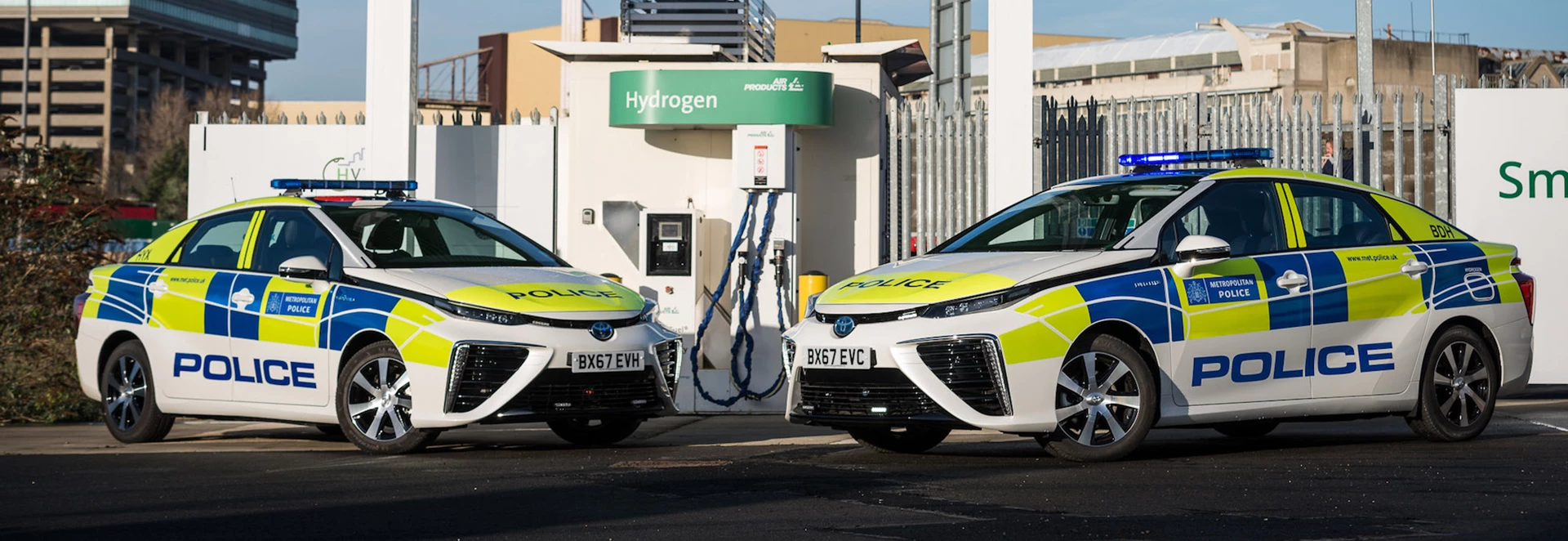London’s Metropolitan Police Service is to take 11 hydrogen-powered Toyota Mirais on as part of its line-up, making it the world’s largest fleet of fuel cell police vehicles.
Both marked and unmarked vehicles are being made for the unit, with the first of those delivered in full livery.

The Mirai has a range of 300 miles from its fuel cell setup, and will have access to five hydrogen fuel stations around London – although there are plans to increase the amount of hydrogen fuelling stations around the capital.
In order to afford these vehicles, the Metropolitan Police has received funding from the Fuel Cell and Hydrogen Joint Undertaking – which is looking to invest in increasing hydrogen fuel cell awareness and infrastructure across Europe.
Metropolitan Police Commander Neil Jerome said: “We are delighted to have taken delivery of 11 of these cars to support policing in London. They are our first entirely zero-emission response vehicles and this is an exciting development for us.
“The Met is committed, alongside the Mayor, to making the service as environmentally friendly as possible and a big part of that work is ensuring our fleet is green. Since late 2015 we have been actively looking at ways to hybridise and electrify our fleet as well as exploring other new technologies, such as hydrogen.
Save money on a new Toyota Mirai today
“This is enabling us to make great strides towards our ambition of procuring 550 vehicles as zero or ultra-low emission by 2020.”
Shirley Rodrigues, deputy mayor for environment and energy, added: “It is fantastic to see the Met’s first ever zero-emission vehicles take to the streets of London. Hydrogen fuel-cell electric vehicles have an important role to play in helping lower harmful emissions and improve air quality on our roads and the Mayor’s Hydrogen London partnership is working to develop the use of this technology in the capital.
“The Mayor is determined to take the bold action needed to protect Londoners from our toxic air, and this move highlights how the capital’s emergency services are leading by example and supporting his work towards becoming a zero-carbon city by 2050.”




